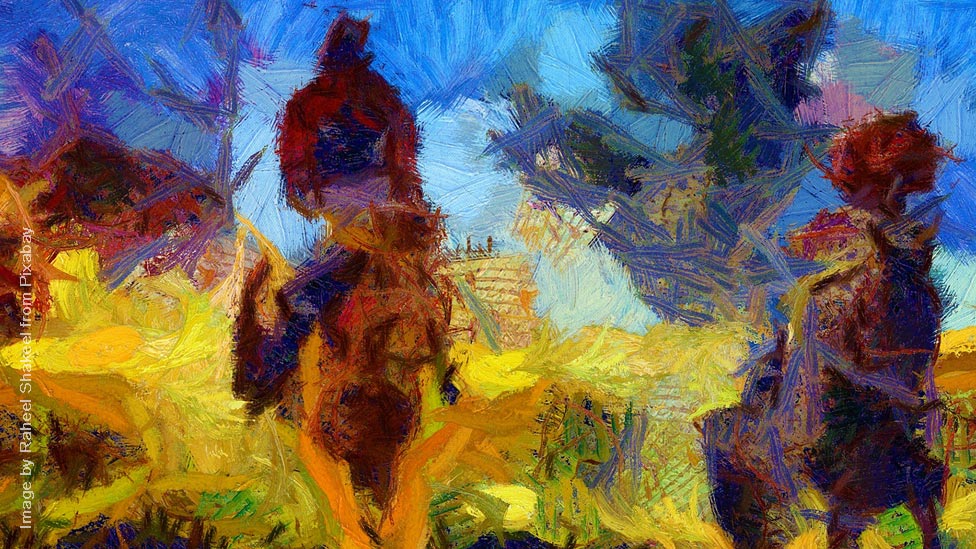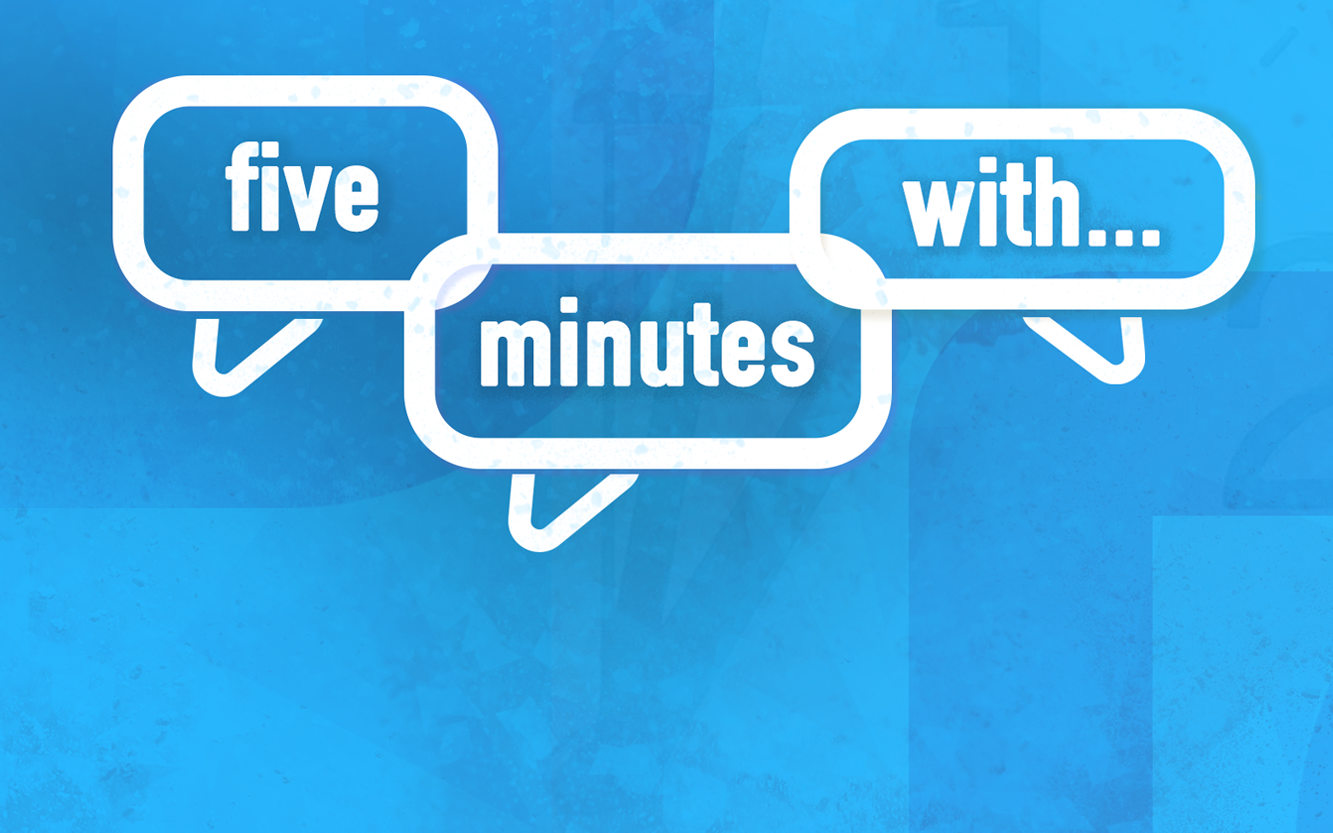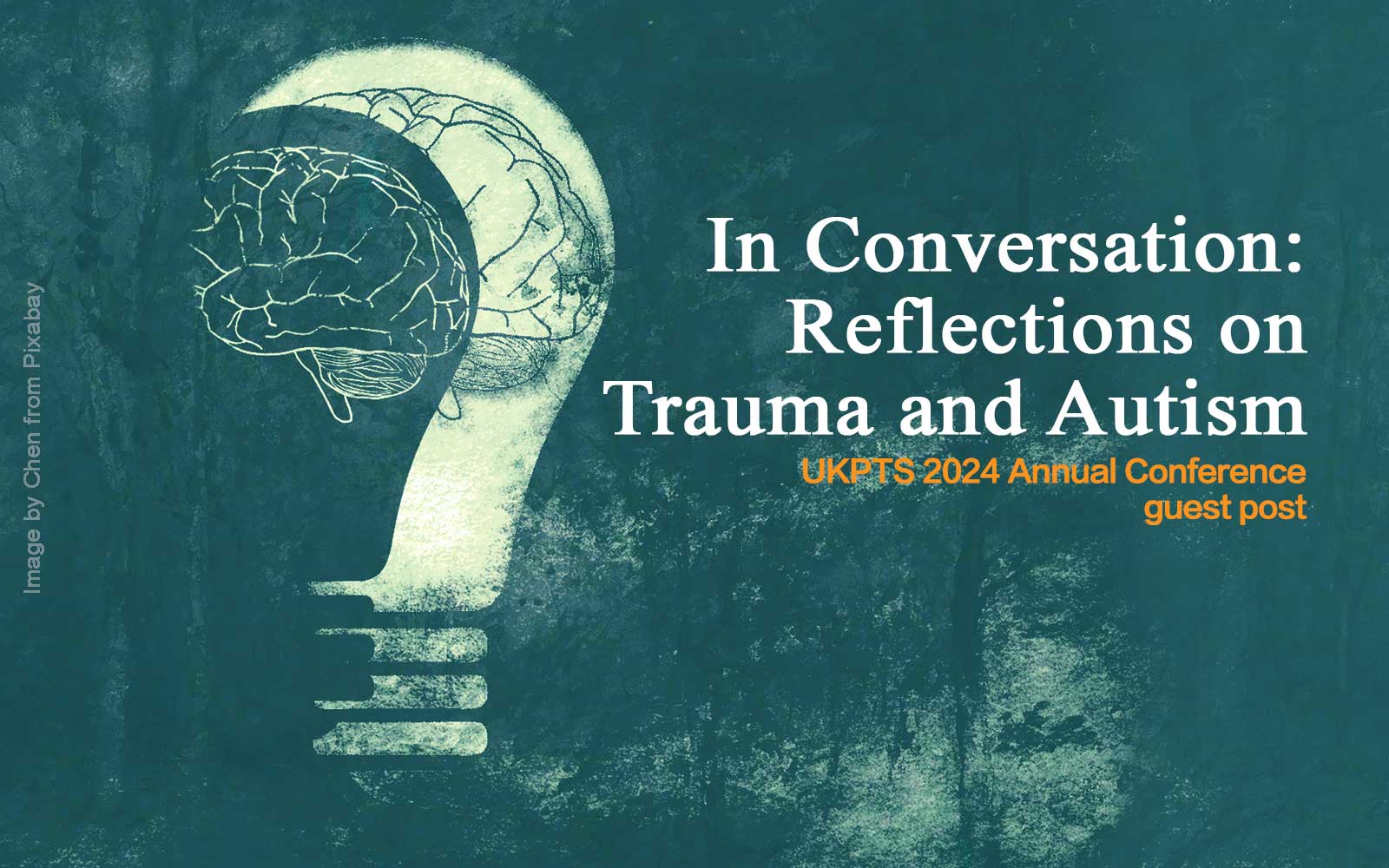Equine-Assisted Therapy
A Shared Path: Equine-Assisted Therapy for Trauma
In our third guest post responding to the UKPTS 2024 Annual Conference theme of integrated approaches to trauma care, trainee Clinical Psychologist at the University of Oxford, Ellen Iredale explores equine-assisted therapy, and what mechanisms may be at play on the therapy ground.

Until recently I felt slightly embarrassed about my side interest in equine-assisted psychotherapy. I feared it was just too woolly an area for someone committed to the rigorous evaluation and practice of theoretically-driven psychological therapies with clear mechanisms of change. Was my lifelong love of horses clouding my judgement? The evidence base for equine-assisted therapy for trauma is expanding and warrants exploration of the potential mechanisms at play.
Equine-assisted therapy (EAT), which also goes by other names such as equine-facilitated psychotherapy, is as yet unstandardized, and takes many different forms. Broadly, it refers to mental health professionals working with horses to help bring about psychological change for clients.1 In practice, it often looks like a person in a field participating in exercises and games with a horse, whilst a therapist observes and provides insights and suggestions. Whilst this may conjure an image of a brave horse-whisperer wearing a cowboy hat taming an aggressive, frightened horse, the reality couldn’t look more different – the focus in EAT is on the horse as a therapeutic partne. The horses used in EAT are slow, calm, attuned. It’s more breathing and stretching than bucking and rearing, and it often does not involve riding, or require any previous experience with the animals.
The state of the evidence
There are a growing number of studies investigating the effects of EAT for people with a range of psychosocial difficulties, particularly trauma, which has been investigated both with military veterans2-4 and young people with complex trauma histories.5 Most studies imply that EAT is can be beneficial to some extent, potentially resulting in improved self-esteem and quality of life, and reduced symptoms of depression, anxiety, and PTSD.1,2 However, the evidence base is generally hindered by small sample sizes and a lack of randomization. With some exception,3 few studies go into detail about the interventions investigated and the potential mechanisms of change, making them difficult to replicate.6 Accordingly, there is a need and opportunity to think carefully about potential theoretical and mechanistic underpinnings, in future research and practice. Identifying and evaluating how EAT might work, and therefore who it might work best for, will be essential to building and refining the evidence base, as well as to properly investigating its claims. Here, then, are some ideas about some of the underlying mechanisms that may be at play, which I hope will both draw on and extend existing thinking on the topic.
There is no room for an elephant in the room when there is a horse.
How might it work?
Attachment: The beginning
The most common theoretical explanation for EAT is that horses, as prey animals which depend on flight as a means of survival, have evolved to be extremely responsive to subtle body language cues,7 not just of other horses but of humans too. Anyone who has spent time around horses – or who has a pet dog – will agree that these animals react quickly to human posture and movements. Horses (and dogs) can provide us with comfort through difficult emotions by physical proximity (e.g. nuzzling).
However, it is not just ‘being there’ which seems to be important in this dynamic, but that the animal can move towards us in our distress – just as a responsive caregiver soothes a human infant, which, with repetition can contribute to a secure attachment relationship. This kind of stable base is also what many therapists seek to provide for their clients. When this is provided by horses as well as human therapists, it could be particularly powerful for people who have experienced trauma that affects their attachment styles. Perhaps horses are less likely to evoke the negative emotions associated with receiving care for people who have experienced trauma at the hands of human attachment figures. Experiencing interactions with an equine ‘other’ as safe and responsive could become a gateway to enabling people with attachment trauma to trust and build relationships with humans – beginning, perhaps, with the therapist.
Many people feel that their pets never judge them. Because the attunement of horse and human is played out non-verbally, the process can potentially bypass feelings of shame and guilt. Fear of judgement can be a barrier for clients with trauma histories to trust their therapist enough to talk about events for which they (often inaccurately) feel some responsibility.8 The German documentary Stiller Kamerad (Silent Comrade)9 follows military veterans with PTSD during EAT sessions. One of the soldiers had killed a man in combat, and an army paramedic talks of moral injury from not being allowed to intervene when she witnessed the kidnap of a young girl during conflict. People do not need to explain what has happened to them or what they have done to access comfort from a horse. Horses respond to embodied emotions, not beliefs or appraisals. Without a pre-frontal cortex, horses lack the new-brain competencies which enable us to worry, ruminate, and judge. Where the presence of a human therapist may be an initial barrier to progress in talking therapy, accessing non-judgemental acceptance first from a horse may give people a vital experience of relational safety that could aid the later development of a strong, trusting alliance with a human therapist.
The moment-by-moment attunement of horse with human is also reciprocal: to complete exercises such as gently asking the horse to walk by your side, you need to be attuned to the horse’s reactions. EAT may enable clients to practice responsiveness to others in a less-threatening way – perhaps for parents who can find it difficult to respond consistently to their children because of their own developmental trauma, or for people on the autistic spectrum who can find reciprocal social communication difficult.
I really did feel that maybe he’s responding to my energy.
-Participant, Hemingway et al. (2019)
Emotional co-regulation: Horses have bigger hearts?
Research has demonstrated that in humans, social processes are also conducted and reflected at a physiological level.10 Social cognition is embodied: the synchronicity of physiological processes such as breathing and heart rate indexes coordination and facilitates co-regulation between individuals.11 There is some, albeit early-stage evidence that horses and humans may, in some circumstances, synchronise their heartbeats.12,13 What this doesn’t explain is how horses can help to calm humans down, and not just mirror our threat response. One possibility is that the calming signals14 that horses use to release tension and down-regulate their own nervous systems and those of other horses are analogous to the signals used by humans. When we see a horse relax, we relax too – just as yawns echo through human groups.
What about behavioural and cognitive change? The head-heart lag reversed.
So far, I have focused on how horses may read, respond to, and down-regulate, human emotional responses. These may be potential mechanisms by which horses can facilitate emotional shifts in humans, particularly for painful emotions that can be slow to change, such as shame and guilt related to trauma. But can EAT produce behavioural and cognitive, as well as emotional, change? The head-heart lag is a popular concept among CBT therapists. This is the idea that people are often much quicker to recognise that they hold unhelpful and illogical beliefs than they are to truly feel that alternative appraisals of themselves or their problems are true – even when they readily logically accept that new ways of thinking may be more accurate. If EAT can work at the physiological and emotional level, perhaps the opposite is true: the heart leads and the head follows. Emotional shifts can open a window of opportunity for the use of cognitive therapy techniques to facilitate new ways of thinking. Indeed, there is reason to suggest that cognitive and behavioural change can happen throughout EAT sessions.15
Watching the dance of leading and following in an EAT session could be understood through a Gestalt therapy lens. The focus given in some EAT sessions to moving and doing, coupled with an exploration of the here-and-now, resembles a behavioural intervention. This can be combined with attentive therapist enquiry into cognitions approaching a classic CBT intervention.
It’s emotions, it’s trust, it’s responsibility.
-Participant, Hemingway et al. (2019)
As much as horses respond to humans, they are also herd animals who live in strict hierarchies and often look to people as leaders. If you haven’t experienced it for yourself, believe me when I say that the emotions aroused by being followed or not followed by a horse, ignored or pushed around, trusted or feared, can be extraordinarily powerful, and make it hard to turn away from core beliefs such as not being wanted, loved, or good enough; or familiar schemas such as abandonment, vulnerability, or seeking approval.
If one wanted to take a psychodynamic perspective, it could be said that a horse is a better tabula rasa than a human therapist could ever be – a truly blank canvas on which to project needs, desires, and beliefs, and one which doesn’t (and perhaps cannot) lie, physiologically or behaviourally. Systemic therapists (such as Claudia Swierczek who features in Silent Comrade) may see habitual relational patterns being re-enacted with an equine partner on the therapy ground, with a one-person reflecting team in the form of the human therapist always present to offer new insights on the process as it unfolds.
Certainly, the core principles of CBT are also all there: the sticky thought-feeling-behaviour-physical sensations cycle is present on the therapy ground and a responsive horse provides instant feedback to doing or feeling differently. Behavioural experiments in EAT might look like stepping out more confidently to lead the horse, or insisting on personal space boundaries, facilitating changes to negative automatic thoughts such as ‘I can’t do it’ or ‘No-one cares about me’. And horses respond quickly to both behavioural changes visible through body language, and emotions detectable as the physiological level, allowing clients to swiftly gain evidence to build new beliefs – a kind of four-legged bio-feedback monitor. Depending on the problem the client and therapist are working on, there may be an element of metaphor albeit made very physical. There is no space for an elephant in the room when there is a horse.
Grounding: Coming back down to earth.
At a basic level, horses are warm, furry, and solid, with a unique sound and smell. They are also not present in the day-to-day lives of most people in WEIRD countries. This could make horses an ideal partner for grounding and trigger discrimination in cognitive therapy for PTSD. This is evident in the opening scene of Silent Comrade, in which a siren threatens to trigger a flashback for Swierczek’s client, and she encourages him to hold fast to the horse, drinking in the horse’s corporeal solidity which signals no longer being in a danger zone. Reflecting on the session, Swierczek encourages her client to hold onto this new image of the horse when encountering future triggers. EAT may help clients to create both new mental images to counter PTSD triggers, and new experiences of safety and ways of relating pre-verbally and non-judgementally to another being. This could represent a turning point for people who find it hard to trust others enough to receive help through classic talking therapies.
Thinking traps and defence mechanisms mean nothing to horses. They respond to how you feel and what you do. Horses have a way of getting past your barriers and under your skin. With horses, there is nowhere to hide, and no-one to judge you. These twin truths, potentially both terrifying and comforting, mean that EAT may hold huge potential. To know just how much, we need to rigorously investigate empirically the mechanisms by which it may work.
Click for more details of the UKPTS 2024 Annual Conference, ‘Trauma Care: Towards an Integrated Approach’.
The one-day conference will take place on 19 January 2024 at Wolfson College, Oxford will feature speakers on a range of topics including psychedelics, resilience, functional neurological disorders and more.
References
- Lentini JA, Knox MS. Equine-facilitated psychotherapy with children and adolescents: An update and literature review. Journal of Creativity in Mental Health. 10(3):278-305 (2015).
- Palomar-Ciria N, Bello HJ. Equine-Assisted Therapy in Post-Traumatic-Stress Disorder: a Systematic Review and Meta-Analysis. Journal of Equine Veterinary Science. 104871 (2023).
- Arnon S, Fisher PW, Pickover A, Lowell A, Turner JB, Hilburn A, Jacob-McVey J, Malajian BE, Farber DG, Hamilton JF, Hamilton A. Equine-assisted therapy for veterans with PTSD: Manual development and preliminary findings. Military Medicine. 185(5-6) (2020).
- Romaniuk M, Evans J, Kidd C. Evaluation of an equine-assisted therapy program for veterans who identify as ‘wounded, injured or ill’and their partners. PloS One. 13(9) (2018).
- Naste TM, Price M, Karol J, Martin L, Murphy K, Miguel J, Spinazzola J. Equine facilitated therapy for complex trauma (EFT-CT). Journal of Child & Adolescent Trauma. 11, 289-303 (2018).
- O’Haire ME, Guérin NA, Kirkham AC. Animal-assisted intervention for trauma: A systematic literature review. Frontiers in Psychology. 6:1121 (2015).
- Marchand WR. Potential Mechanisms of Action and Outcomes of Equine-Assisted Services for Veterans with a History of Trauma: A Narrative Review of the Literature. International Journal of Environmental Research and Public Health 20:6377 (2023).
- Lee DA, Scragg P, Turner S. The role of shame and guilt in traumatic events: A clinical model of shame‐based and guilt‐based PTSD. British Journal of Medical Psychology. 74(4):451-66 (2001).
- Stiller Kamerad. [film]. Directed by: Leonhard Hollmann. (2017).
- Palumbo RV, Marraccini ME, Weyandt LL, Wilder-Smith O, McGee HA, Liu S, Goodwin MS. Interpersonal autonomic physiology: A systematic review of the literature. Personality and Social Psychology Review. 21(2):99-141 (2017).
- Konvalinka I, Sebanz N, Knoblich G. The role of reciprocity in dynamic interpersonal coordination of physiological rhythms. Cognition. 230:105307 (2023).
- Keeling LJ, Jonare L, Lanneborn L. Investigating horse–human interactions: The effect of a nervous human. The Veterinary Journal. 181(1):70-1 (2009).
- Scopa C, Contalbrigo L, Greco A, Lanatà A, Scilingo EP, Baragli P. Emotional transfer in human–horse interaction: new perspectives on equine assisted interventions. Animals. 9(12):1030 (2019).
- Draaisma R. Language signs and calming signals of horses: recognition and application. CRC Press. (2017).
- Hemingway A, Carter S, Callaway A, Kavanagh E, Ellis S. An exploration of the mechanism of action of an equine-assisted intervention. Animals. 9(6):303 (2019)



